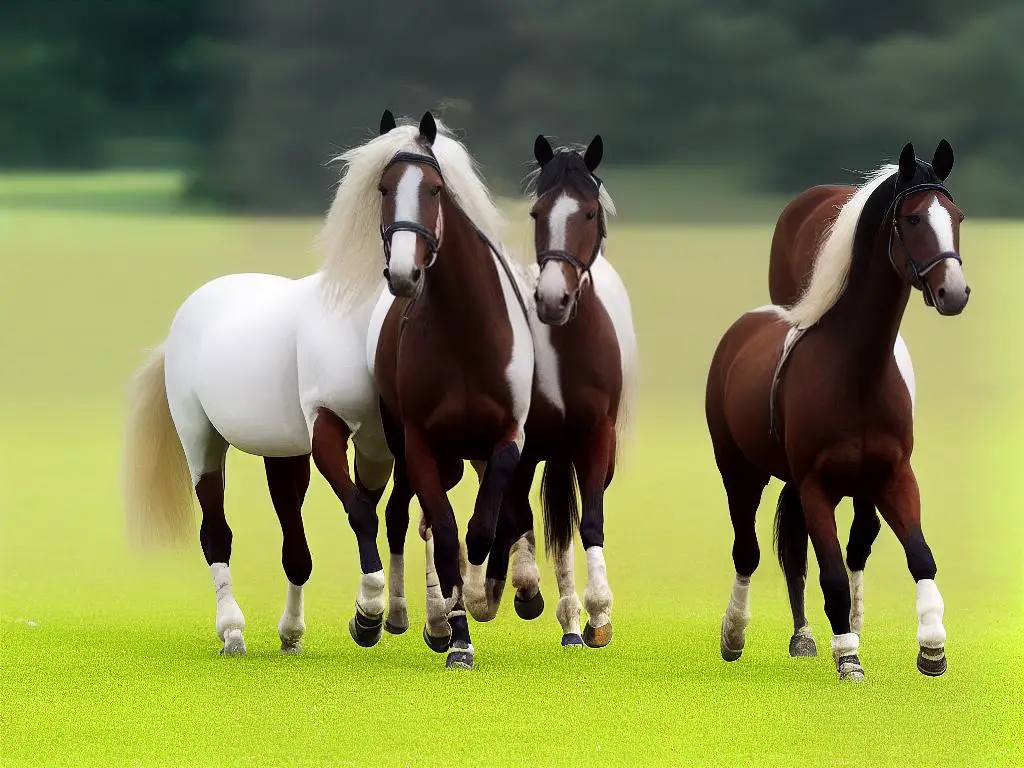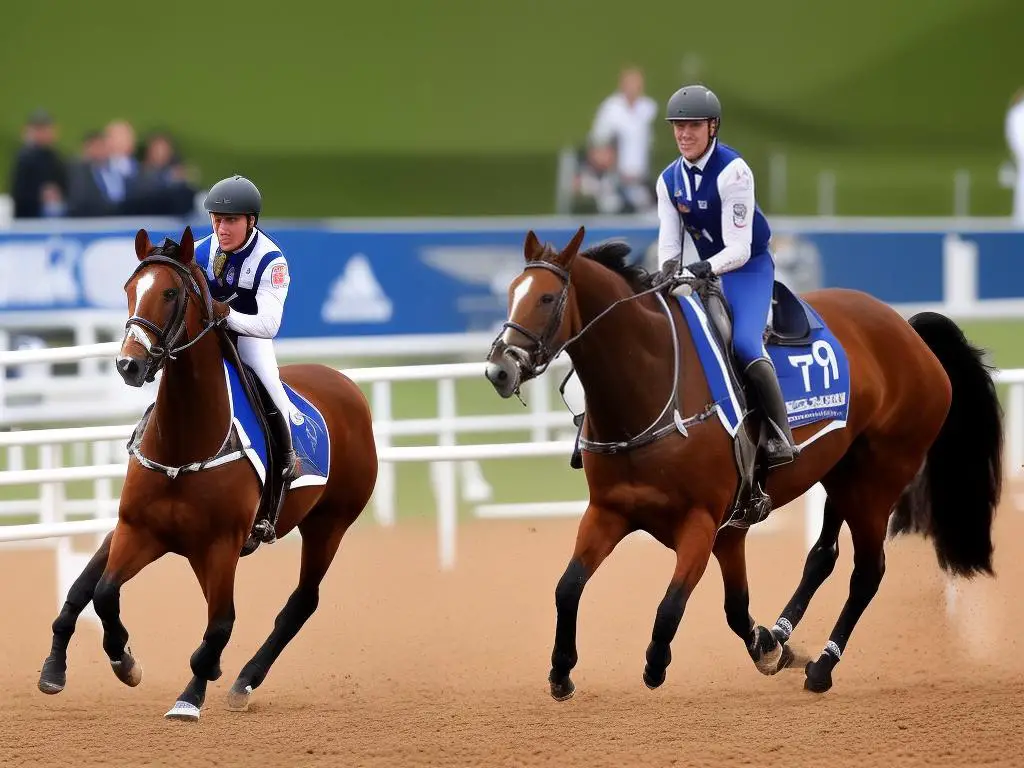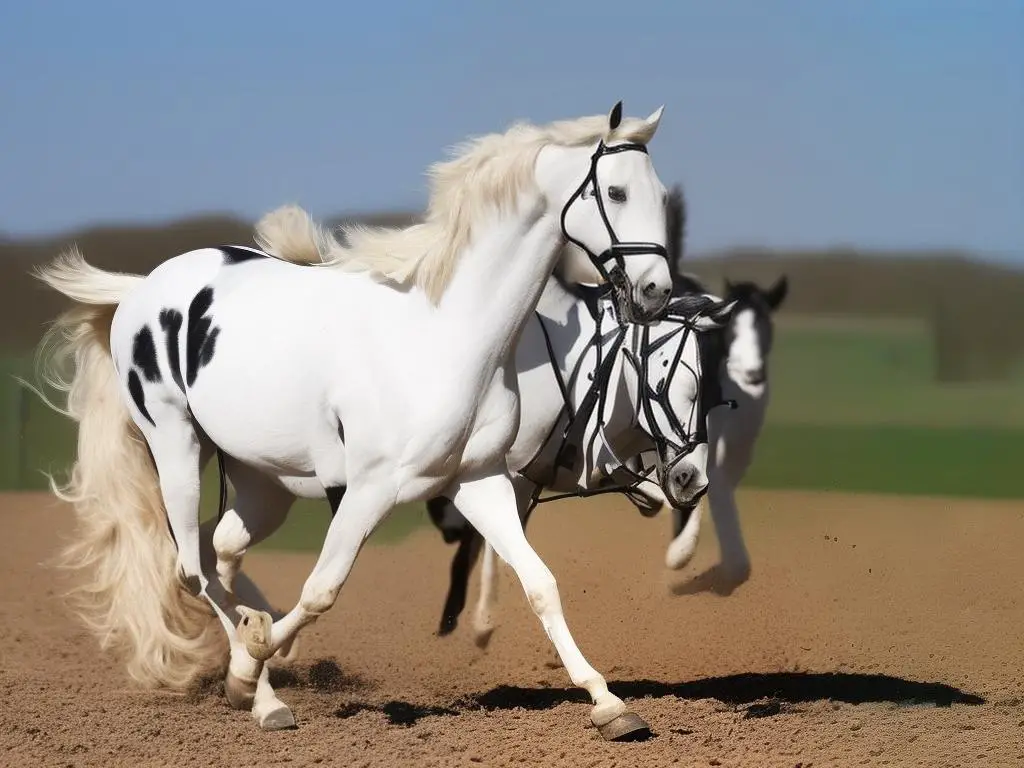Fascinating and distinguished, the French Trotter has earned recognition for its unique origins, impressive physical characteristics, and its remarkable performance in equestrian sports. Cultivated over centuries, the breed reflects a careful blend of native and foreign horse breeds, establishing its unique charisma and diversity. Recognized globally for their speed and endurance, French Trotters have carved their niche in the realm of horse racing and sport. The right care and training can enhance their natural abilities, making them a prized possession for any horse enthusiast. Beyond the rut of races and stables, the French Trotter holds a significant place culturally, carrying a historical charm that’s tightly woven into the fabric of French society. This exploration aims to shed light on these compelling aspects of the French Trotter: its breeding history, physical characteristics, role in sports, care requirements, and cultural significance, providing an ultimate guide to understanding this remarkable breed.
Table of Contents (Horspedia)
Origins and Breeding History of French Trotters
Origins of French Trotters
French Trotters are a horse breed that originated in France in the 19th century to harness their prowess for trotting races and carriage riding. These horses, well-regarded for their stamina and speed, took shape from the interbreeding of Norman mares and stallions from Norfolk and Yorkshire, which were imported from England.
The infusion of Thoroughbred blood in the later stages notably elevated the speed and constitution of these trotters. Furthermore, American Trotter semen, especially that of the renowned trotter named Intermede, significantly contributed to the edification of the French Trotters. This strategic crossbreeding allowed the horses to sustain a moderate speed over long distances, thus rendering them fit for harness racing.
Breeding History of French Trotters
The history of French Trotter breeding is an exercise in comprehensive planning and long-term vision among French breeders. Their early breeding programs began in the late 1800s when the first studbook was established. The breeding focused on emphasizing the breed’s core characteristics, such as endurance, speed, and steady gait.
Initially, these horses were bred in Normandy and then expanded to other regions of France such as Picardy and even the Loire Valley. The breeders carefully selected horses for breeding based on their performance capabilities in addition to their innate trotting abilities.
Starting from the early 20th century, breeders further refined the line by incorporating genes from American Trotters, an influence that continued well into the mid-century. This move was aimed at enhancing the breed’s pace to meet the competitive standards of trotting competitions.
Despite various crossbreeding attempts, the purity and unique traits of French Trotters were carefully preserved and maintained throughout their breeding history. Strict selection protocols have been implemented to ensure only the best specimens carry on the lineage.
Development of Breed Characteristics
The selective breeding of French Trotters led to the development of unique breed characteristics, making them a prized possession in the world of harness racing. Standing about 1.5 to 1.7 meters at the withers, they possess a sturdy physique, robust constitution, and an enduring capacity that lends them well to the long-paced trotting races.
Their robust and durable bodies, combined with their exceptional trotting ability, make them perfect for both harness racing and saddle trotting. The color variations amongst French Trotters are diverse, ranging from chestnut and bay to black and gray.
Despite their racing heritage, French Trotters are exceptionally calm and patient. They are renowned for their docile temperament, uncomplicated handling, and easy trainability, which contribute to their popularity as riding horses for leisure activities beyond the racecourse.
The fascinating history and careful breeding of French Trotters solidify their standing as one of the most respected trotting breeds in the world. Their specific traits are a direct result of thorough and strategic planning by their breeders.

Physical Characteristics and Attributes of French Trotters
Physical Characteristics and Traits of French Trotters
As suggested by its name, the French trotter is a well-known horse breed originating from France. Renowned for its light trotting abilities, it has become one of the key breeds in harness and saddle trotting races worldwide.
Size and Build
Measuring typically between 15.1 to 16.3 hands (1 hand equals 4 inches) in height, the French Trotter presents a modest yet commanding stature when compared to other horse breeds. Their powerful build is displayed through a deep chest, muscular back, and resilient legs assisting in sustained trotting pace critical in grueling long-distance races.
Color
The color patterns of French trotters can range widely. Predominantly, they are observed in bay, brown, chestnut, and seldom occurrences of black and grey. However, irregular white patches may appear on their coat.
Conformation
French Trotters demonstrate a well-proportioned and harmonious conformation. They possess a slightly large head, with expressive eyes and well-set ears. Their neck is of medium length and often muscular, descending into a deep and broad chest. They are characteristically recognized by their long back and loins reflecting their strength and stamina. Their limbs are hardy and solid, equipped with tough hooves to withstand varied terrains. The breed’s overall conformation reflects its strength, endurance, and agility, vital for its role as a trotting horse.
Unique Attributes
The defining attribute distinguishing French trotters from other breeds is their remarkable trotting ability, capable of maintaining a full stride without breaking into a gallop. This higher gait is not a natural ability but often painstakingly trained which adds to the breed’s charm for horse aficionados.
The French Trotter is also known for its excellent endurance. Traditionally used in farming and hauling duties, the breed can maintain steady speeds over substantial distances. This stamina, powered by strong hooves and solid bone structure, sets them apart in long-distance racing events.
Furthermore, the breed’s versatility extends beyond the racetrack. Being hardy and adaptable, French Trotters are frequently used in equestrian activities, trekking, and pleasure riding. They make particularly good models for equestrian sport since they combine speed and strength with a reliable, even temperament.
Fundamentals
The French Trotter, a breed of horse renowned for its trotting prowess and significant other attributes such as strength, resilience, and adaptability, lives up to its name.

French Trotters in Racing and Sport
Understanding French Trotters
Distinguished by their remarkable trotting speed, resilience, and endurance, French Trotters emerged in France during the 19th century. These horses carry the genetic mix of Norfolk and Yorkshire Trotters, Thoroughbreds, and Arabians. With a focus on selective breeding, French Trotters possess a unique and efficient gait that makes them stand out in harness racing – an esteemed equestrian sport where horses haul a two-wheeled cart, known as a sulky.
Racing Superstars: French Trotters in Harness Racing
Primarily known for their prowess in harness racing, French Trotters often dominate the sport, exhibiting incredible speed and stamina. Their unique trotting style allows them to cover great distances at a consistent, rapid pace without breaking into a gallop, giving them a tactical advantage over other breeds in long-distance racing.
In France, these races are extremely popular, with the annual Prix d’Amerique being a highlight. This prestigious event attracts some of the best French Trotters in the world, with the winning horse gaining international acclaim. Interestingly, most French Trotters begin their careers in monté racing – a variation of harness racing where the jockey rides directly on the horse’s back – before transitioning to harness racing.
Sport Horses: French Trotters Beyond Racing
While they excel in racing, French Trotters are versatile athletes that also perform well in various equestrian sports. The breed’s build, combined with its strength and endurance, make it well-suited for such versatility.
In eventing, a sport that combines dressage, cross-country, and show jumping, French Trotters have consistently proven their worth. Their mental agility and calm demeanor allow them to excel in dressage, while their strength and endurance make them potent competitors in cross-country events. Furthermore, their powerful hindquarters enable them to execute swift, high jumps, making them adept at show jumping.
The Influential Role of French Trotters in Equestrian Sports
Demonstrating unprecedented performance in harness racing and other equestrian sports, French Trotters have left an indelible mark in the equestrian arena. Their versatility and winning track records have not only spiked their demand for competitive events but also driven up their auction prices significantly.
The sustained dominance of French Trotters in different equestrian disciplines has fueled their popularity and broadened their global footprint. It’s now a common sight to witness these exceptional horses make their mark in varied equestrian events worldwide, a testament to their adaptability and formidable legacy in equestrian sports.

Training and Care Requirements for French Trotters
French Trotters: An Exceptional Breed with Special Needs
The French Trotters, widely recognized for their incredible stamina and speed, are an extraordinary breed that hails from Norman, France. While they are primarily bred for trotting races, they also excel in equestrian and eventing competitions. Like all breeds, French Trotters also come with their unique set of training and care needs.
Diet and Nutrition
One of the primary things to keep in mind when determining the care plan for a French Trotter is their diet. This breed is heavily involved in physical activities and therefore requires a more targeted diet to support their energy levels and health. A balanced diet for a French Trotter generally includes good quality hay, grain, and plenty of access to fresh water.
Protein, vitamins, and minerals should also be included in the horse’s diet either through high-quality horse feed or dietary supplements, depending on the individual horse’s requirements. It’s essential to consult a vet or trained equine nutritionist to ensure the diet supports not only the horse’s activity level but also their age, size, and metabolic health.
Grooming and Health Care
Regular grooming is an essential part of caring for a French Trotter. This includes brushing their coat to remove dirt and prevent skin diseases, checking their hooves for stones or debris which can cause discomfort or injury, and cleaning their ears and eyes for any signs of infection. Dental care is also crucial, with equine vets recommending dental check-ups at least once a year.
Health care for a French Trotter extends beyond grooming. Regular veterinary checks are vital to catch possible health issues early. These checks often involve vaccinations, de-worming, and overall health assessments.
Training Routines
French Trotters are an athletic breed, thriving on regular exercise and rigorous training routines. Typical training for these horses includes long-distance trotting and high-speed workouts to build stamina. Given their tenacity, it’s crucial to ensure that trainings are safely implemented and are varied to keep the horse engaged and prevent burnout.
Required Equipment
The specific equipment needed for French Trotters largely depends on their function. For trotting races, sulkies (light, two-wheeled carts) are required. In terms of tack, French Trotters use a standard bridle and saddle, similar to most horse breeds. However, they may also require boots and bandages during exercise and training for leg protection.
Having French Trotters is a commitment that requires comprehensive knowledge of specific horse care procedures and their requirements. With the right nutrition, healthcare, training, and equipment, this breed can flourish and offer a fulfilling experience to the owner.

The Cultural Significance of French Trotters
French Trotters: A Symbol of French Heritage
French Trotters are more than just a breed of horse. They are a significant part of France’s cultural heritage. Renowned for their distinctive trotting style, harness racing prowess, and stamina, French Trotters are a source of national pride and an integral aspect of French tradition.
French Trotting races, show trotting, and driven events are popular traditional competitive events in France, with the French Trotter often being the breed of choice. These horses are hailed as national idols, and their events are key occurrences that unite people from all corners of the country, building a sense of community and shared tradition.
A Crucial Component of the French Horse Industry
The French horse industry is one of the most prestigious and economically impactful in the world, and the French Trotter is a key player in this sphere. Moreover, the breeding, training, and racing of these horses have created a multitude of jobs and has stimulated significant economic activity in rural areas. Hence, not only does the French Trotter contribute to the richness of French culture but also to the health and vibrancy of the country’s economy.
Given the love that the French people have for horse racing and the respect they accord to this breed, the French Trotter has helped keep the nation’s horse racing industry thriving. As racing events grow in popularity, the cultural significance and economic impact of the French Trotter also continue to increase.
Impacts of French Trotters Beyond France
French Trotters have also greatly influenced the horse industry beyond the borders of France. Breeders from other countries, particularly from the United States, have sought after the French Trotter for its trotting ability, hardiness, and soundness. The demand for these horses has fostered international connections and exchanges, further boosting the influence and importance of French Trotters in global equestrian circles.
Furthermore, the French Trotter’s prowess in harness racing has made it a sought-after breed in other countries where this sport is popular. The breed’s influence and popularity have extended well beyond France, impacting horse racing and other equestrian sports across the globe.
Cultural Symbol and Legacy
In conclusion, the French Trotter is not simply a beloved horse breed in France; it is a powerful cultural symbol. The breed embodies French values of refinement, endurance, and competitive spirit, and its influence reaches far beyond the racetrack. Whether on the national stage or within international circles, the French Trotter continues to shape and uphold the cultural norms and traditions of French society, securing its place as an enduring and impactful cultural icon.
![]()
With an intriguing history of development, striking physical traits, and an impressive knack for sports, the French Trotter is undeniably a breed that grabs attention. Proper care and training not only uphold its health and physique, but also contribute to its outstanding performance on racing tracks. Its impact, however, extends far beyond the confines of a racing circuit or stable. The French Trotter, with its ties to the passion and spirit of French society, stands as a symbol of cultural heritage and national pride. The exploration through the breed’s different aspects only magnifies the worth and charm of the French Trotter, suggesting that its charm stretches further than its rich bloodline or its glorious strides on the race tracks. With the right understanding, appreciation for this accomplished breed can only grow, encapsulating the French Trotter as a tribute to equine beauty, strength, and versatility.